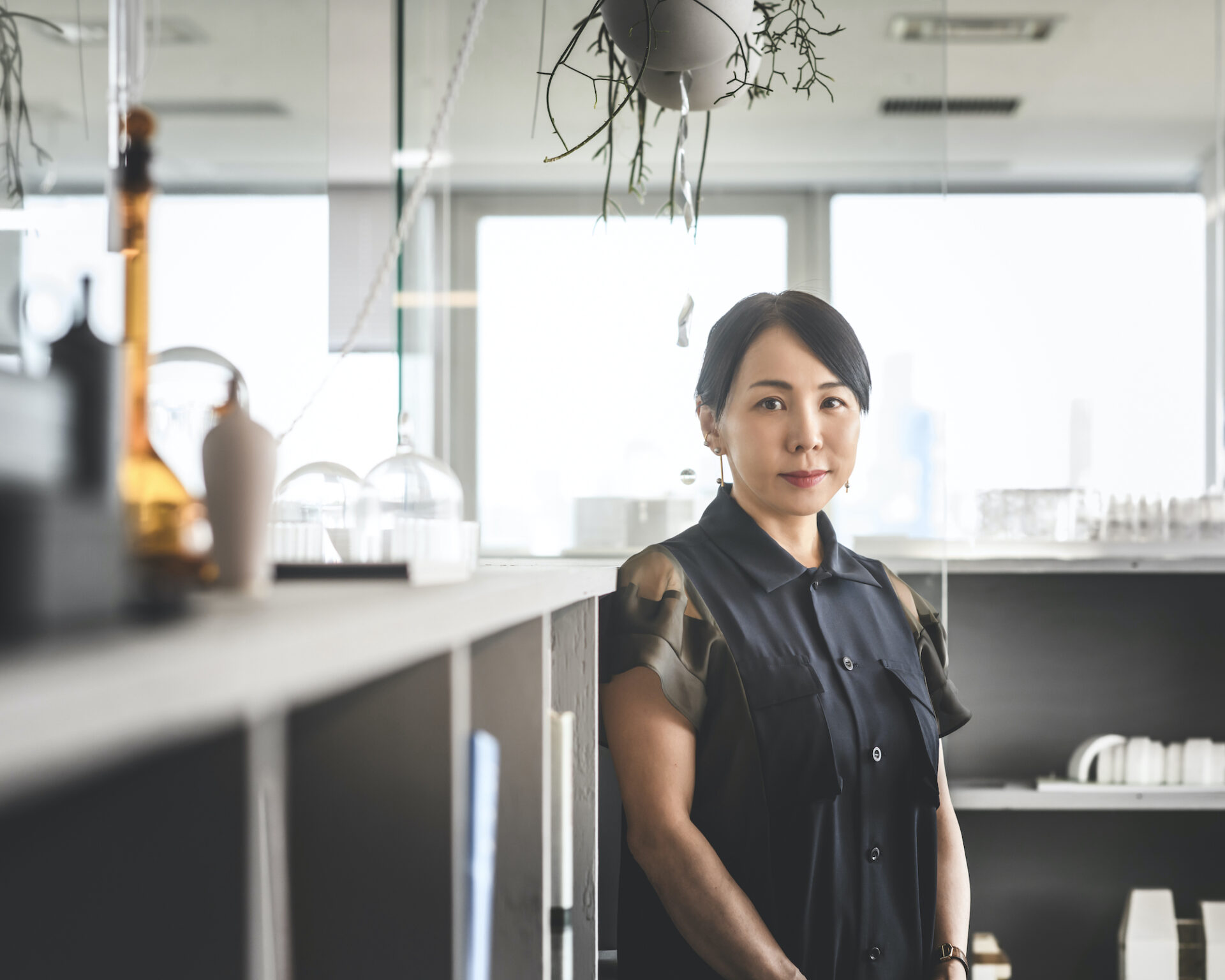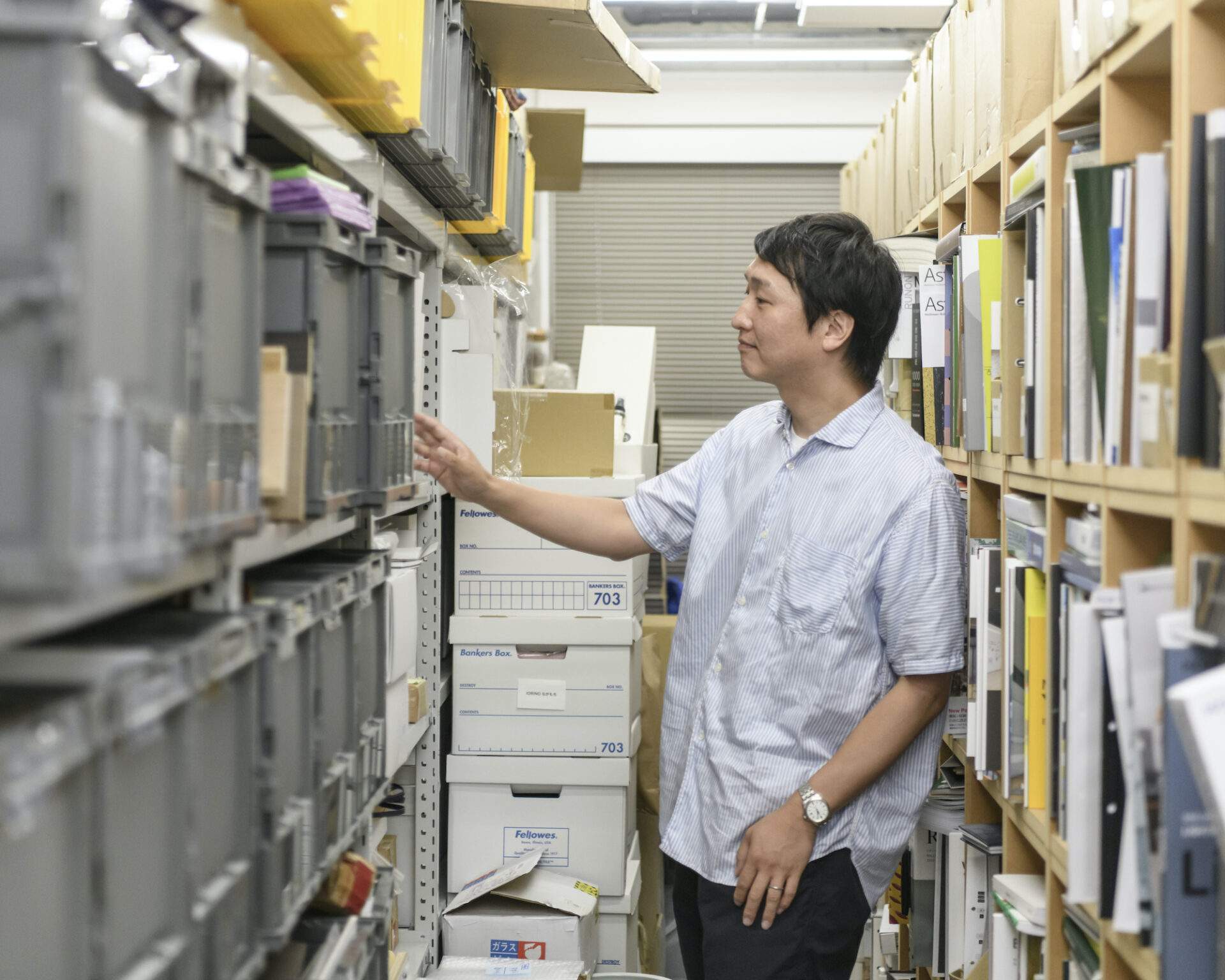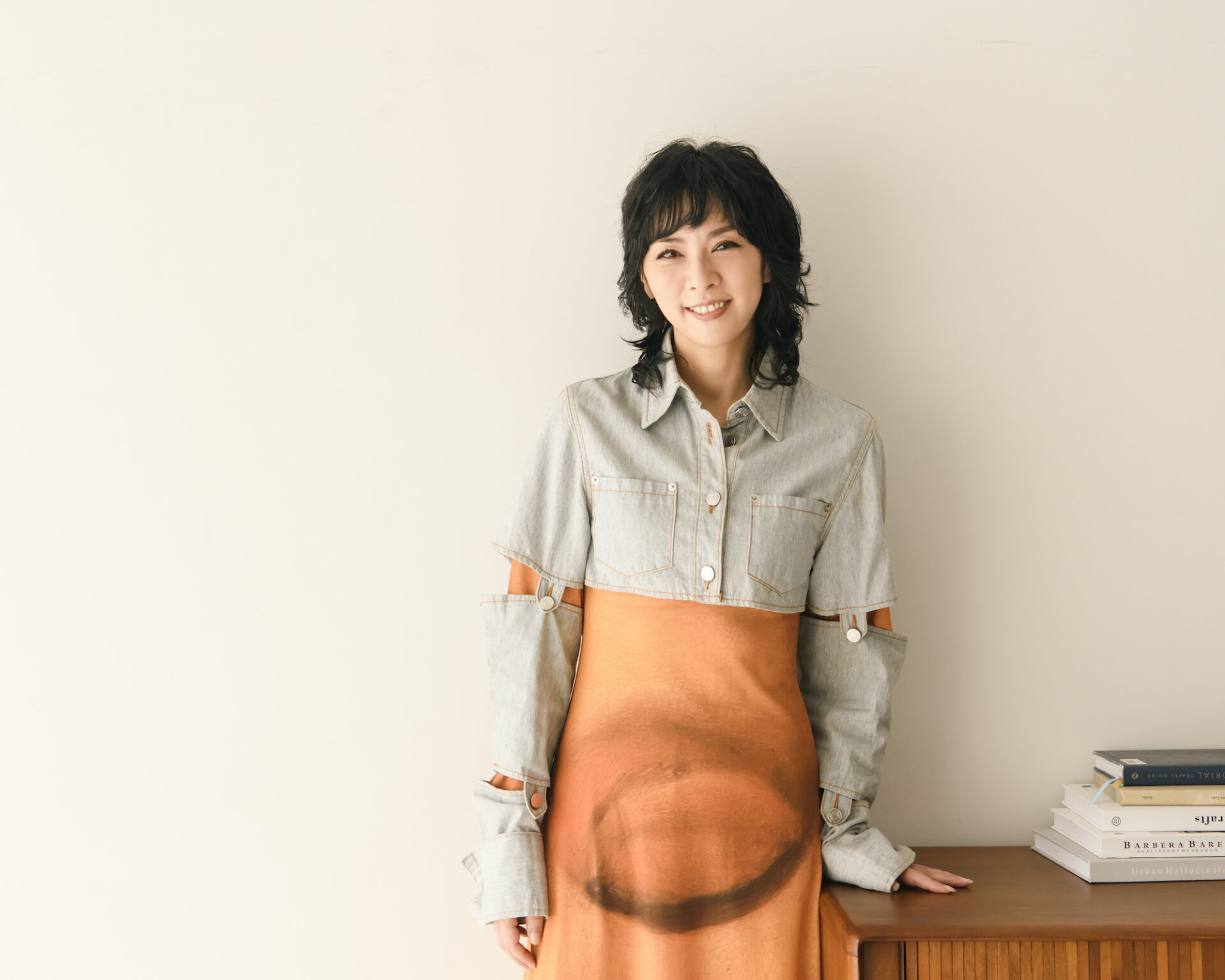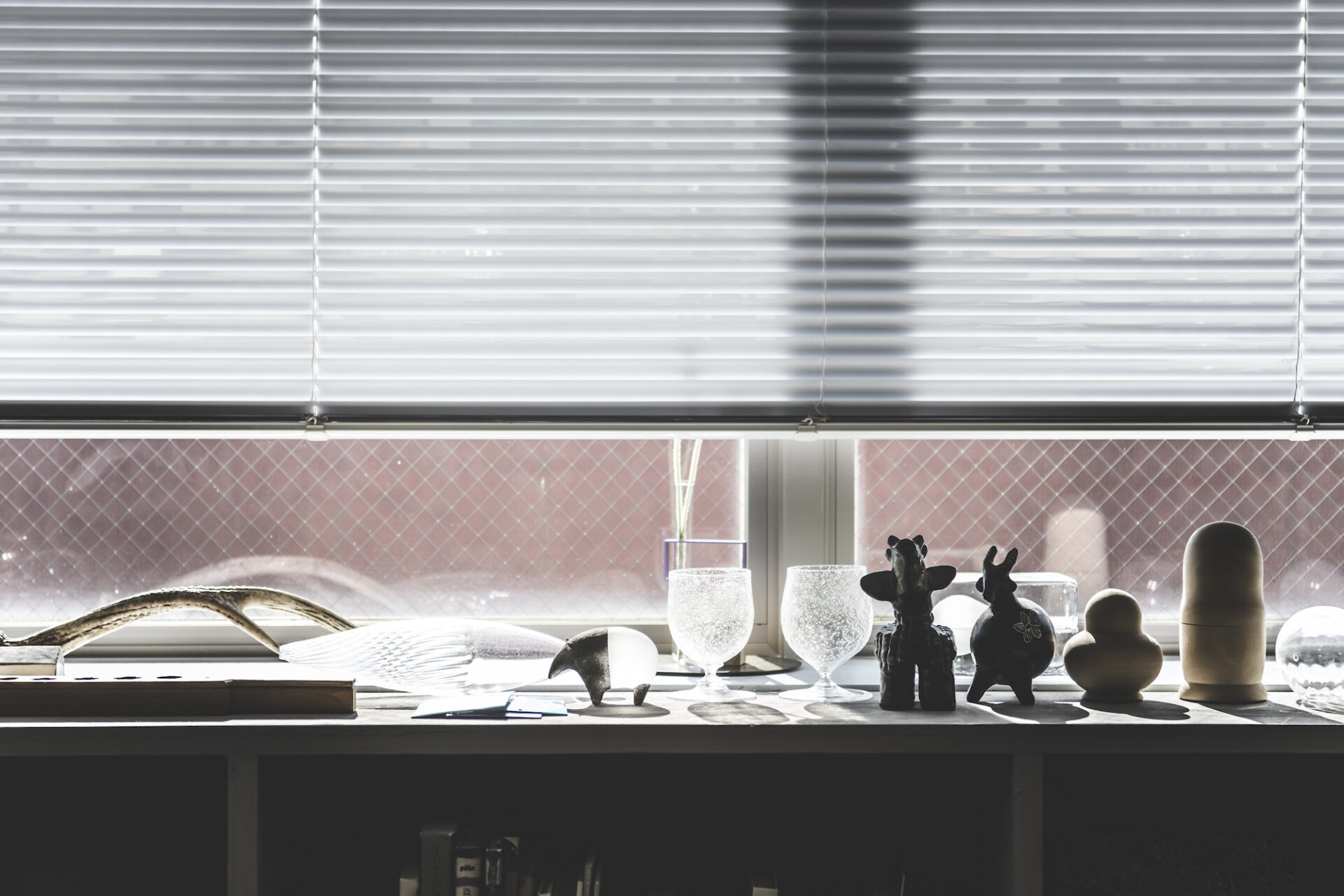
2025-08-21
Vol.20
Architect
Yuko Nagayama(part 2)
-
Style-Free: A Common Denominator
-
Architecture That Moves
-
Rejection is the Default for Proposals
-
Input Beyond Predetermined Scenarios
In recent years, female architects in Japan have been making remarkable strides. Leading this movement is Yuko Nagayama, whose work has drawn attention both domestically and internationally. She was involved in the Tokyu Kabukicho Tower project in Shinjuku, Tokyo — a building that rises like a fountain in the heart of the city — as well as two pavilion projects for Expo 2025 Osaka, Kansai, Japan. Her intuitive sensitivity and sharp insight into the essence of things drive her commitment to economically and socially sustainable architecture — and her approach has resonated across diverse professional fields. Masakazu Shigeta, founder of OSAJI, has followed her work for nearly a decade. He sat down with Ms. Nagayama to explore how she continues to achieve both critical acclaim and concrete results while remaining stylistically flexible — and to hear her thoughts on the ideal form of architecture.
(Click here for the first half of the interview.)
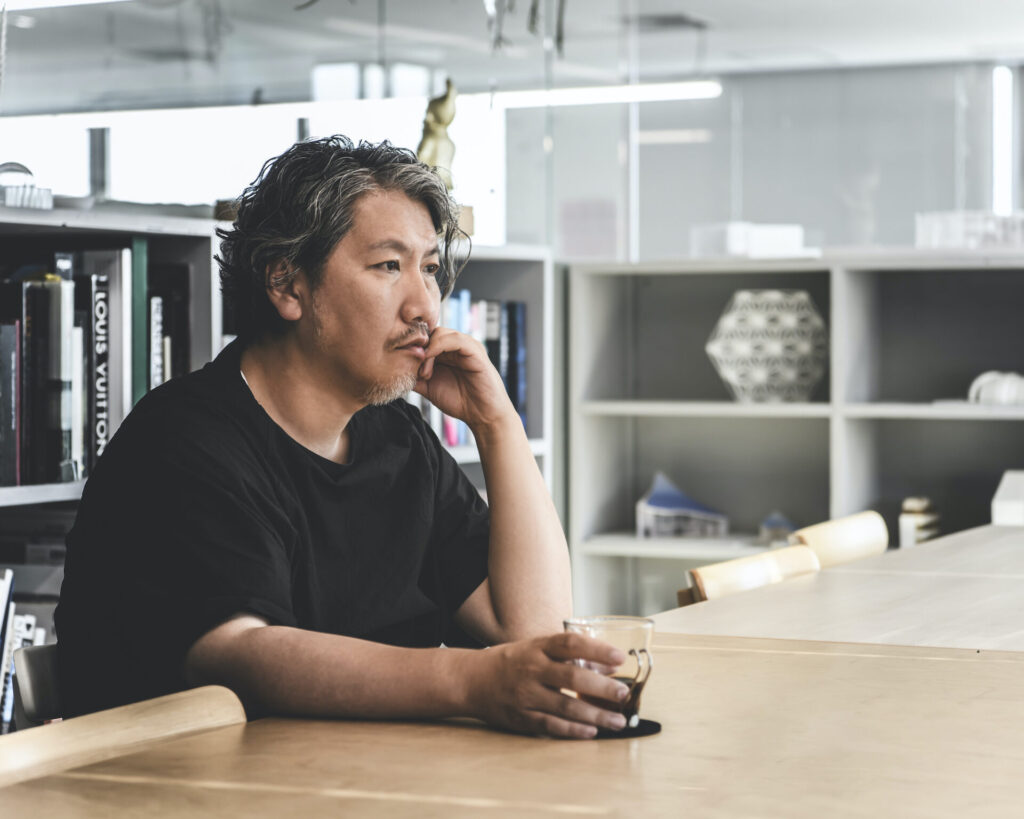
“As someone involved in product development, I believe it’s wrong to create products that exclude certain users. It’s not that the products choose users, but the users who choose products.” (Shigeta)
Masakazu Shigeta: The other day, I watched a livestream of your talk at DAIKANYAMA TSUTAYA BOOKS. What impressed me most was your comment about being style-free — not working with a fixed style. It resonated with me because I’ve always felt that I’m the kind of person who doesn’t have a fixed style myself.
Yuko Nagayama: My dialogue partner that day, Mr. Takehiko Sakayama — who is also a staff member at the bookstore — said to me, “You don’t have a fixed style, right?” I replied, “Exactly.” I’ve never approached my work with the intention of establishing my personal style, because every project comes with a different client with their own philosophy on architecture, and each calls for a different program and approach.
Each architectural firm has its own focus — some specialize in residential projects, while others are known for public buildings like museums. However, our firm’s portfolio is all over the place. So, we always approach each project with a beginner’s mind. The point is, there are insights that the insiders often overlook but newcomers to an industry — like us — can notice. We value those fresh impressions — what we see and feel without filters — and all we have to do is consider how to translate them honestly into architecture. By doing so, the answer naturally takes shape on its own. I believe that starting fresh each time, rather than relying on a fixed style, is more likely to help you reach what truly matters.

Shigeta: Whenever brand-building comes up as a topic of discussion these days, I feel people focus only on the style. I’ve always believed that a brand is not about the style itself, so I feel a sense of discomfort with that trend. Before the style is established, there should be a vision where the company empathizes with its users and grows together with them, and it’s the continuation of that trusting relationship that ultimately becomes what we call a brand — that’s my belief. An approach that simply focuses on style in order to appeal to consumers — without sharing the background — may result in misunderstandings as well. Above all, I feel this approach lacks sustainability.
This connects to the topic of style as well — I am often asked, “OSAJI is a cosmetics brand for sensitive skin, right?” I don’t deny that, but I deliberately avoid emphasizing that label. As someone involved in product development, I believe it’s wrong to create products that exclude certain users. It’s not that the products choose users, but the users who choose products. That’s precisely why we want to do everything we can to create inclusive products that anyone can use. If we categorize our products or decide to create them with a fixed style, we end up limiting our potential user base.
——I think I’m beginning to see why Ms. Nagayama’s idea of being style-free resonates with you.
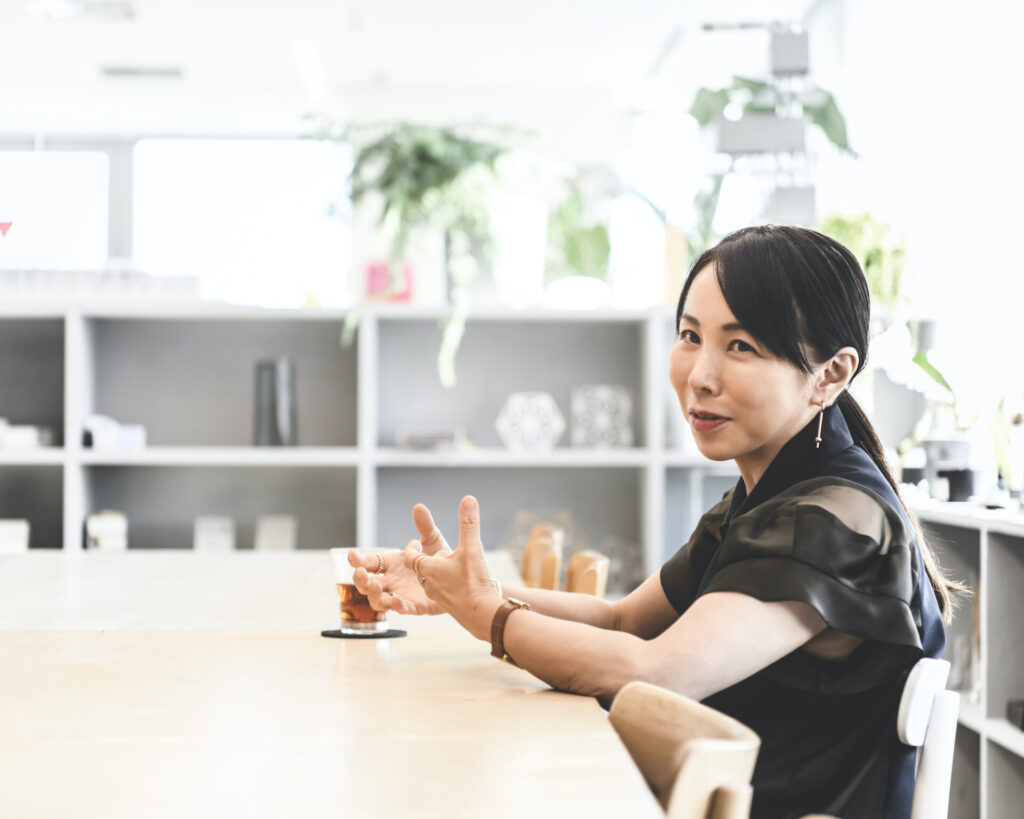
“Using good-quality materials for a long time is the most sustainable approach — that’s why I want to create architecture that people naturally foster attachment to.” (Nagayama)
Shigeta: I’ve always thought creating something that lasts into the next era is difficult. There used to be many long-established brands with a history of more than 100 years, but that’s no longer the case. In the field of architecture, buildings with a 100-year history are still relatively rare. I imagine architects hope the building they designed will be properly maintained and last a long time. What are your thoughts about the future of your architecture?
Nagayama: I wouldn’t mind if a building I designed is renovated by someone else — in fact, I’d actually welcome it. It’s impossible to say that what I want to do now will always be right in the future. In that case, passing down the appeal of architecture to future generations — so that it’s loved and maintained for a long time — is much better than being demolished. I’d be perfectly fine if a building I’ve originally designed is transformed into something entirely different, like a residence into a museum. I want people to reinterpret them and think, “It might be interesting to use this architecture in this way.” I believe buildings that inspire people’s imagination are the truly attractive ones.
——What kind of architecture do you find less attractive?
Nagayama: Buildings that claim to be maintenance-free and use only new materials are one example. To begin with, no building can truly be free from upkeep. Just like human beings need constant care to maintain health, buildings require regular upkeep. If that’s the case, why do people seek maintenance-free buildings? Proper upkeep fosters attachment to the building and a sense of responsibility to use it for a long time. I feel that architecture marketed as maintenance-free lacks that kind of perspective.
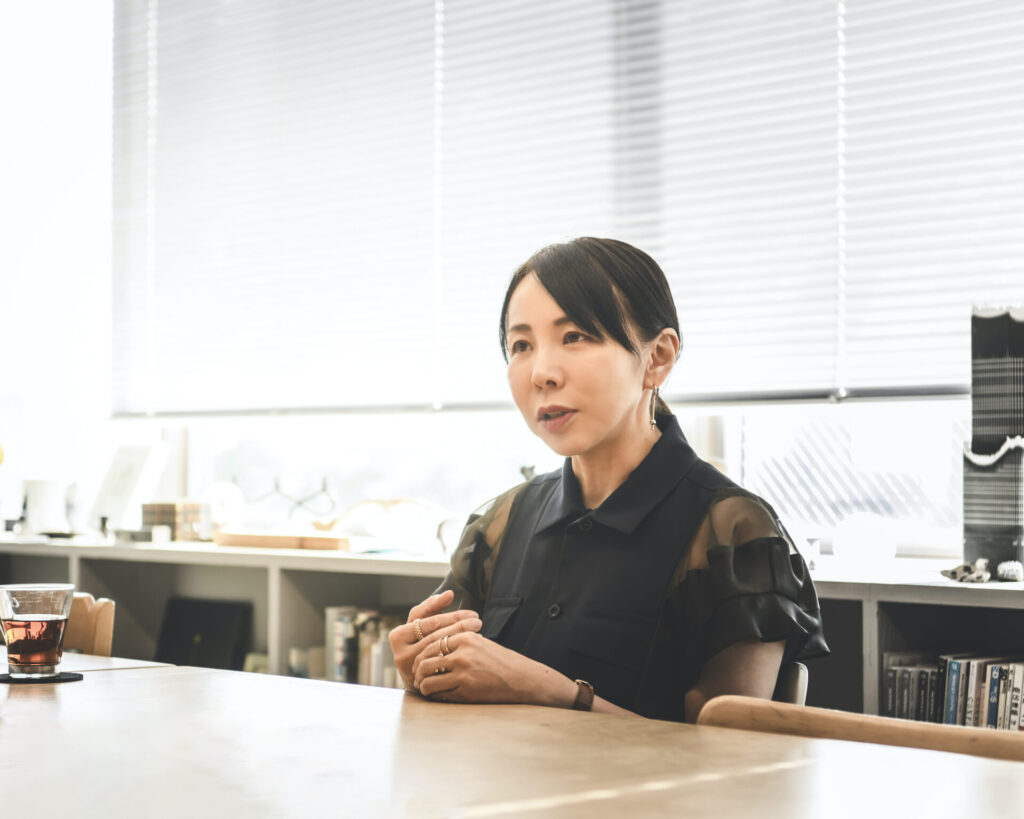
——While maintenance-free architecture is gaining attention, I understand that sustainability and resource circulation are increasingly being incorporated as design requirements.
Nagayama: Yes, that’s exactly true. But the most sustainable architecture is the kind that people love and cherish over time. Using recycled materials alone isn’t the only way to be eco-friendly — even using virgin materials can be environmentally sound if they’re used for a long period. After all, using good-quality materials for a long time is the most sustainable approach. That’s why I want to create architecture that people naturally foster attachment to.
——I imagine that with “limited-time” structures like Expo pavilions, the challenge lies in their inherent difficulty in sustaining long-term existence.
Nagayama: Exactly. That’s why we have to think systematically and develop ideas that create continuous connections from one project to the next. For example, we’re reusing materials from the Japan Pavilion at Expo 2020 Dubai for the Women’s Pavilion at Expo 2025 Osaka, Kansai. Moreover, we’re planning to connect that further to the International Horticultural Expo 2027 in Yokohama. This design approach considers not only post-demolition reuse, but also embodies an architect’s dream of architecture that moves.
The attempt to create movable architecture is not new — it has been explored in various places before. For instance, we can find a similar idea in Archigram’s concept of a Walking City, where an entire city could move, or the architectural philosophy called Metabolism, which was advocated in the 1960s. In this project, I’m exploring whether we can create architecture that can move through a lightweight system.
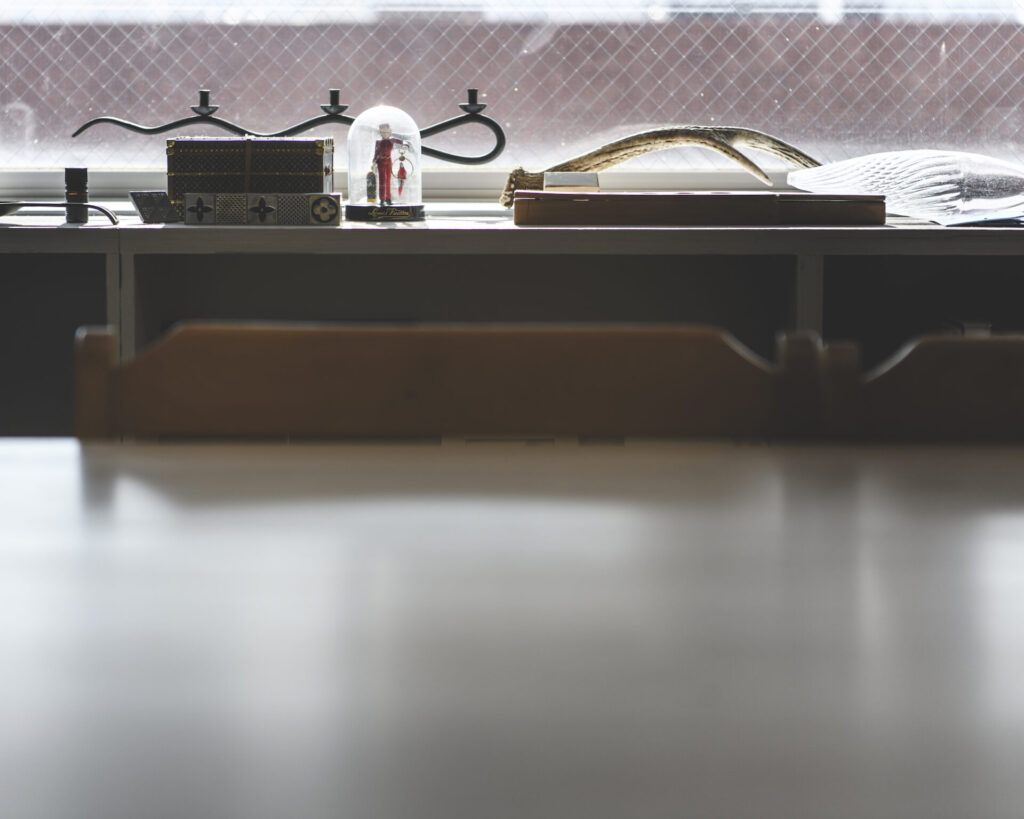
——Is it difficult to reuse facilities like pavilions without a strong commitment from the designer’s side? For example, the discussion regarding the reuse of the Grand Roof Ring — the large wooden structure for Expo 2025 Osaka — suggests that an architect’s wish alone is not enough to make reuse happen.
Nagayama: Yes, it’s nearly impossible to achieve unless the architects themselves drive the process forward. First of all, the budget for a pavilion only covers construction through to demolition costs. In the case of the Japan Pavilion for Expo Dubai, it was built with national budget, so it wasn’t easy to bring it back from Dubai on my own. So I started by seeking partners to collaborate with.
I was incredibly fortunate to find both collaborators and a destination for reuse — it was almost miraculous. The timing may have been perfect as well. People with strong environmental awareness came together, each contributing in small ways that added up to real support. Without those encounters, I wouldn’t have been able to realize it. Once you have one successful case, the path becomes much clearer for future projects.
——This is exactly what you described when reflecting on the Good Design Award 2024 judging process — leveraging both the ability to engage others and the willingness to be involved as driving forces.
Nagayama: Today, those who engage others and those who are willing to be involved are loosely connected through the digital network, making it easier to collaborate. Among them, some are involved in small ways, while others are deeply involved and eventually become the ones encouraging others to get involved. Through these diverse forms of engagement, small ideas can flourish on one side, while big initiatives can gain momentum on the other side. I believe this dynamic will be a driving force to change the world.
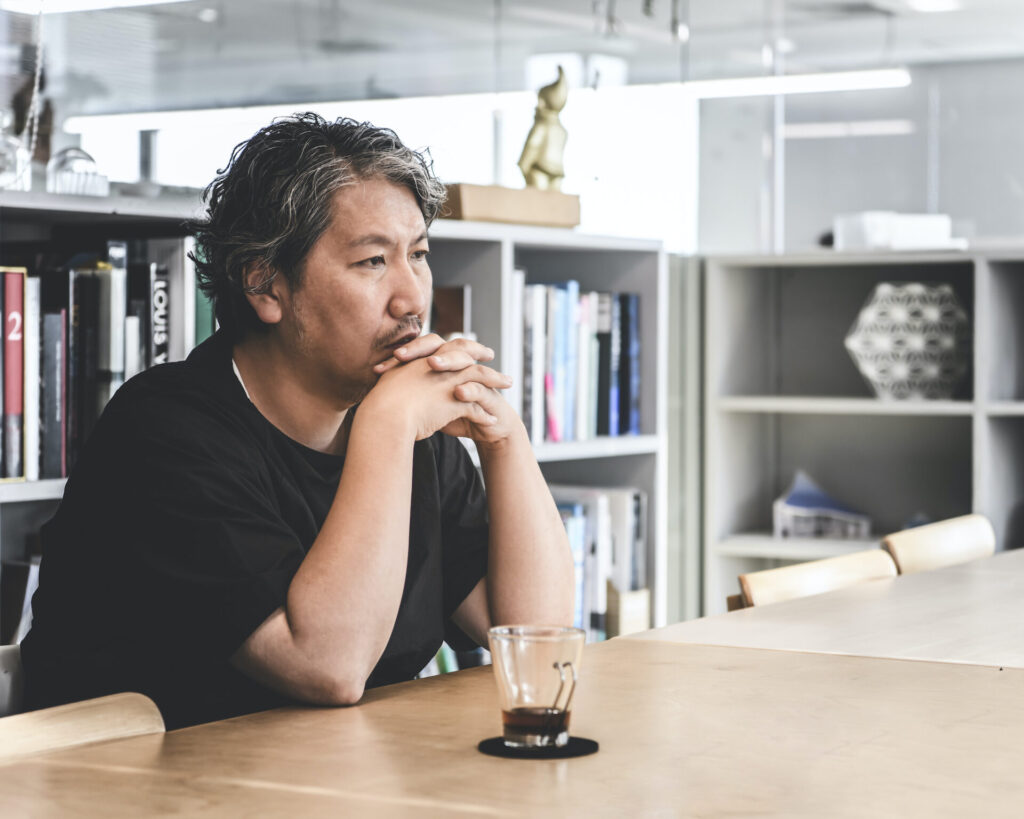
“Part of my role is to foster a company culture where, no matter how challenging the task, everyone’s first reaction is ‘OK, let’s tackle this!'” (Shigeta)
Shigeta: Since I’m an architecture enthusiast myself, many of my friends are architects. One of them once told me that, “An architect’s job is to let themselves be entirely absorbed by the client’s wishes and requests, almost like being spiritually possessed.”
Nagayama: I think I understand what it means. While the expression “being possessed” might be putting it a bit strongly for me, I always try to imagine things from the client’s perspective. They’re often envisioning something different from what I perceive, so being possessed could be one way to explore their perspective.
However, I’m not sure if following the client’s perspective leads to the best outcome. After understanding their viewpoints, I sometimes propose slightly different options. Especially in residential projects, their requests tend to be generic and play it safe, making it hard to understand what they truly want. In those cases, I ask to see their current lifestyle and then propose ideas that might be a bit of a leap from their original requests. Sometimes the clients tell me, “This is exactly the life we’ve been hoping for!”
Shigeta: I believe it’s important in any field to avoid following a predetermined scenario.
Nagayama: That might be true. For that reason, I try to avoid mapping out the process from preset goals. If you do that too much, you risk eliminating unexpected possibilities along the way. If a client mentions something they want to change in the middle of a project, I take it as an opportunity to explore new possibilities that I wouldn’t have imagined. Rather than simply checking if my original plan was correct, I find it far more exciting when a project evolves through twists and turns to reach an unexpected idea.
Shigeta: I suppose there are times when craftsmen apply their own logic and finish a detail even though it differs from the designer’s original intention. How do you handle those situations?


Nagayama: I make it a point to listen carefully to craftsmen’s reasoning, and sometimes I even redesign a project based on their input. Above all, I always keep in mind to communicate with them regularly.
Most of what we create has never been done before, so our proposals are basically rejected first. However, by persistently proposing alternatives like “What if we approach that way?” or “It might be possible if we adjust this part,” people eventually start to listen to our ideas. I’m quite accustomed to adversity, so even when someone says, “No, we can’t do that,” it doesn’t discourage me anymore. (laughs)
——Mr. Shigeta, you seem like the kind of person who would welcome a request all the more if it were complex.
Shigeta: Well, it depends on what kind of complexity we’re talking about. But, since I don’t work alone for product development, I always keep in mind that I have to respect the reasoning of each staff member who works with me. The key is whether each staff member can stay highly motivated and take initiative. If you try to push your personal preference when the team lacks motivation, you will end up working alone. The same goes for managing an organization.
Fortunately, I feel our current team is motivated to take on challenges in product development. Part of my role is to foster a company culture where, no matter how challenging the task, everyone’s first reaction is “OK, let’s tackle this!”
Nagayama: As your team grows, it must become increasingly hard to maintain that creative focus across everyone.
Shigeta: Eight years after founding the company, we now have 180 staff members. Honestly, I’d like to go back and tell my past self, “Hey, stop there!” (laughs) But it’s too late for that now, so these days I’m constantly thinking about how to unlock the creative potential of all 180 team members.
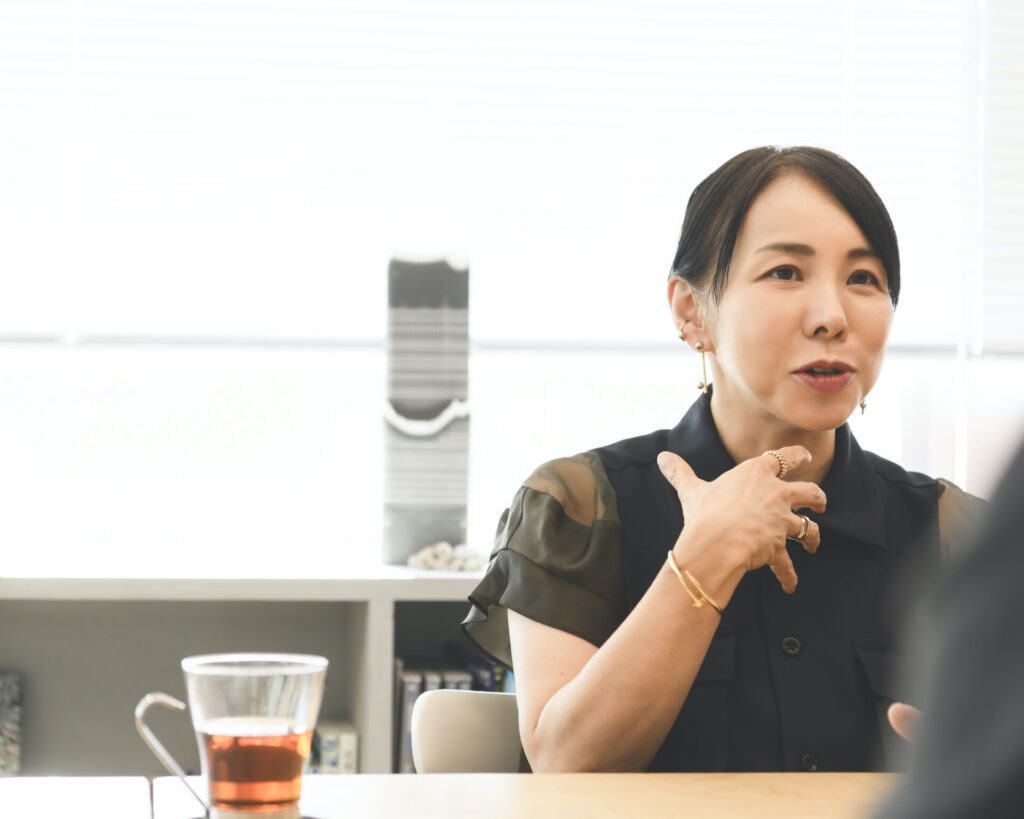
“All I can do to increase the staff’s motivation is simple — bring them meaningful, high-quality projects.” (Nagayama)
Shigeta: For companies like ours, creativity is the only way to capture people’s attention. In fact, my policy is that we must draw people’s attention through creativity. While loudly proclaiming your own principles and policies to the public can attract notice, it also risks creating preconceived notions about your work. More importantly, I believe it makes it harder to build long-term relationships with those who come to you that way. Instead, we want to connect with people who resonate with what we create and how we express it. It’s only recently that I’ve begun to think about what brand-building truly means.
Nagayama: I see.
Shigeta: I used to secretly travel overseas for input and inspiration without telling the staff. I didn’t want them to say things like, “If you have time to go abroad, why don’t you finish this job first?” or have them feel envious. These days, though, I can now openly share my travel destinations, which is largely because my staff now shares the same mindset. They even ask me to tell them about the places I’ve visited. Using photos, we exchange thoughts on what I’ve seen and heard there, and sometimes new ideas emerge for both of us through these discussions. Little by little, I feel we’re becoming a better organization.
Nagayama: Traveling solely for the purpose of gathering inspiration isn’t easy. I never would have imagined doing it before. I used to think it was enough to finish your business and come straight home — that’s how I saw traveling. But after 24 years of continuous output, I’ve come to feel the need to focus more on input. Now that my children are grown, I feel I need to see and experience new, different things.
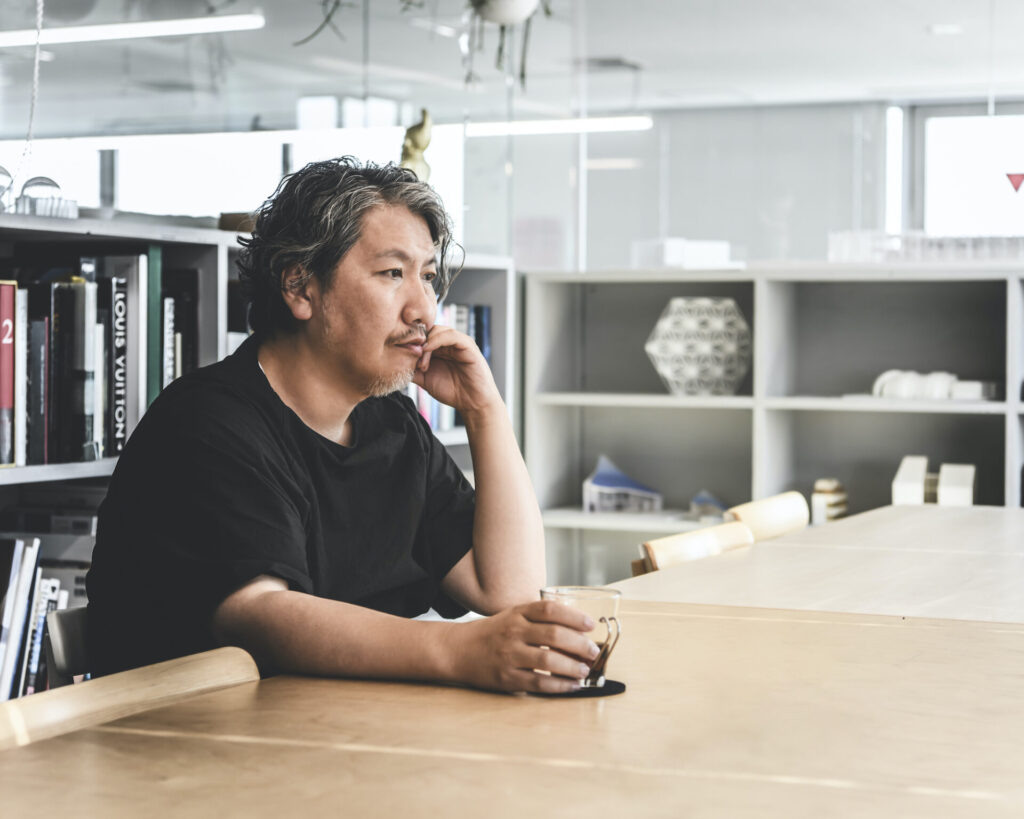
Shigeta: However, if you treat the process of input or gathering inspiration as simply following a predetermined scenario, it won’t bring anything meaningful. In that sense, input can be surprisingly difficult. I think it starts by going somewhere you’ve never imagined visiting.
——Do you have any place you’d most like to visit right now, Ms. Nagayama?
Nagayama: Well, in most cases, I simply explore areas around the places where I visit on business. For me, even the smallest experience with different cultures provides valuable input. Just feeling the atmosphere, observing the city’s buildings, and noticing how the intensity of the sunlight affects the color of the cityscape — all of that is truly inspiring. There are moments when I sensitively respond to things in everyday life, and I cherish the information and insights I gain from those moments.
Of course, I often attend events like the Milan Furniture Fair, and I find that the most meaningful discoveries come from places or experiences that no one has actively promoted or recommended to me.

——In your book “Yuko Nagayama Works – Weaving Stories from Architecture” published this May, there’s a team photo in the final section that really captures the wonderful atmosphere at your firm. What’s your approach to fostering job satisfaction and motivation among your staff?
Nagayama: Most of our staff joined our firm because they’re passionate about design and architecture. On top of that, they can get involved in various projects — everything from product design to skyscrapers. All I can do to increase the staff’s motivation is simple — bring them meaningful, high-quality projects. That’s what I always keep in mind.
I always seek the personal meaning of my role in each project, and the staff shares the same mindset. Once you have that sense of purpose, you naturally become more proactive. In our firm, we use a person-in-charge system — sometimes, one staff member leads a project solo, other times we’ll have a team of three or four working together. Whether it’s a solo project or team effort, creating an environment where everyone takes ownership is a key part of my role.
Shigeta: Talking with you, I’m convinced that we’ll see more and more wonderful architectural work that will endure for centuries.
Nagayama: Thank you, I’m glad to hear that. I’ll do my best!
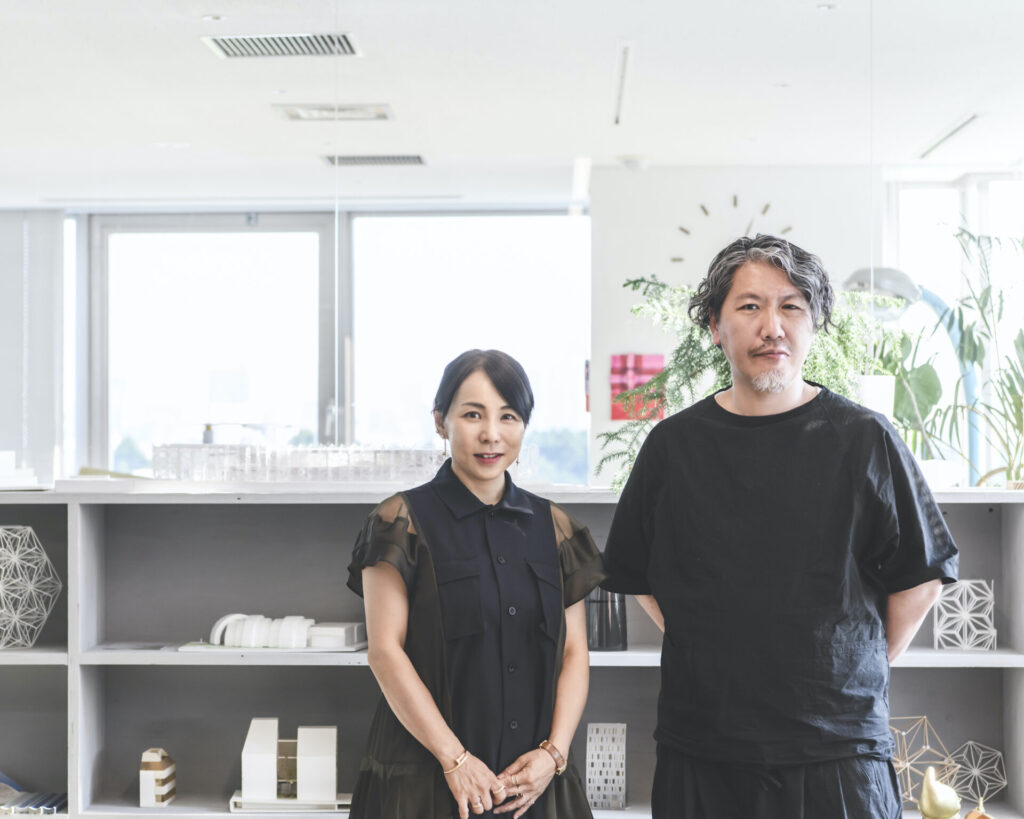
Profile
-
Yuko Nagayama
Born in Tokyo in 1975, Nagayama graduated from the Department of Living Design at Showa Women’s University in 1998. She worked at Jun Aoki & Associates from 1998 to 2002 before establishing her own studio, Yuko Nagayama & Associates, in 2002. Her major works include Louis Vuitton Kyoto Daimaru Store, Jins Park Maebashi Store, the Tokyo Kabukicho Tower, and the Panasonic Group Pavilion ‘Nomo no Kuni’ for Expo 2025 Osaka. She is also involved in the TOKYO TORCH Torch Tower project adjacent to Tokyo Station, scheduled for completion in 2028. She served as a visiting professor at Musashino Art University from 2020 to 2024, and has been vice-chairperson of the Good Design Awards since 2023. Her recent books include Architecture as a Turning Point (Shueisha) and “Yuko Nagayama Works – Weaving Stories from Architecture” (Graphic-sha Publishing).
-
Masakazu Shigeta
After working as an engineer in the music industry, Shigeta began his career as a cosmetics developer in 2001. From 2004, he worked on various cosmetics brands in the healthcare business of Nitto Denka Kogyo Co., Ltd., a metal surface treatment company founded by his great-grandfather. In 2017, he founded “OSAJI,” a skincare lifestyle brand, and became its brand director. In 2021, as a new store of “OSAJI,” he produced “kako,” a specialized shop for home fragrances and perfume in Kuramae, Tokyo. In the following year, he opened a combined shop of “OSAJI,” “kako,” and a restaurant, “enso,” in Kamakura, Kanagawa. In 2023, utilizing the technical skill of Nitto Denka Kogyo, he launched a pottery brand, “HEGE,” and in October of the same year, he became CEO of OSAJI Inc. He also has published books on beauty and held cooking classes and events focusing on food, which is the origin of beauty. He released a collaborative album with F.I.B JOURNAL called “Gensho hyphenated” in November 2024 and has been expanding the range of activities.
Publications
Taberu Biyou (Eating for Beauty) (SHUFU TO SEIKATSU SHA, 2024)
42-Sai ni Nattara Yameru Biyou, Hajimeru Biyou (Beauty cares to quit and start when you turn 42) (Takarajimasha, 2022)
Information
Yuko Nagayama & Associates
An architecture studio headed by architect Yuko Nagayama. Established in 2002, the studio has worked on a wide range of projects — including private residences, commercial facilities, museums, and urban planning.
https://www.yukonagayama.co.jp/
The Japan Pavilion at Expo 2020 Dubai
Designed in response to the Expo’s theme, “Connecting Minds, Creating the Future,” the pavilion features a distinctive façade that expresses the fusion of Japanese and Middle Eastern cultures. Its design combines Japan’s traditional hemp leaf pattern with Middle Eastern arabesque motifs. Inspired by origami, which has its roots in origata — a traditional Japanese code of etiquette for gift wrapping — the pavilion’s three-dimensional exterior welcomed countless visitors.
The Woman’s Pavilion at Expo 2025 Osaka, Kansai, Japan
Officially titled “Woman’s Pavilion in collaboration with Cartier,” this pavilion continues the theme of women and gender equality carried over from the Expo 2020 Dubai, with the aim of encouraging broader reflection on the topic of gender equality among all people. It consists of two floors — the first features an immersive exhibition that offers visitors the opportunity to experience the perspectives of three women, while the second houses an event space called “WA,” where dialogue sessions, panel discussions, and lectures can be held. The impressive façade, with its striking white, three-dimensional lattice, is reused from the Japan Pavilion at Expo 2020 Dubai, which was also designed by Nagayama herself.
“Yuko Nagayama Works – Weaving Stories from Architecture”
Published in May 2025 by Graphic-sha Publishing, this book is Yuko Nagayama’s first monograph. It presents a comprehensive selection of her work, including her debut project — the Louis Vuitton Kyoto Daimaru Store — two pavilions for Expo 2025 Osaka, and the ongoing TOKYO TORCH Torch Tower project. Tracing her 24-year career as an architect, the book offers insights into her sources of inspiration and stories behind each design process. The final section features a contribution by architectural historian and critic Taro Igarashi.
-
Photographs:Eisuke Komatsubara
-
Text:Masahiro Kamijo
NEWS LETTER
理想論 最新記事の
更新情報をお届けします
ご登録はこちら
ご登録はこちら
メールアドレス
ご登録ありがとうございます。
ご登録確認メールをお送りいたします。
